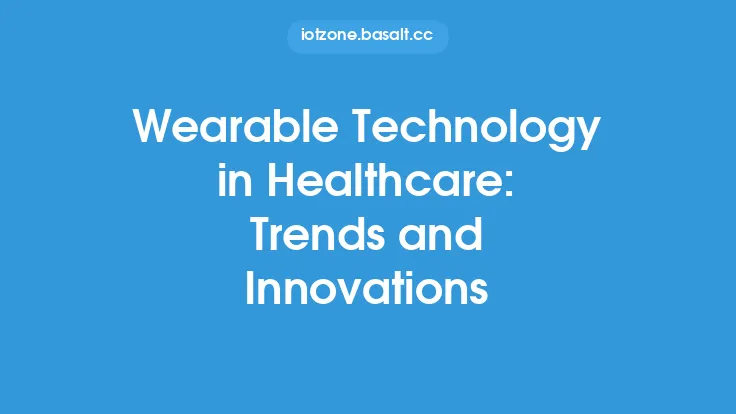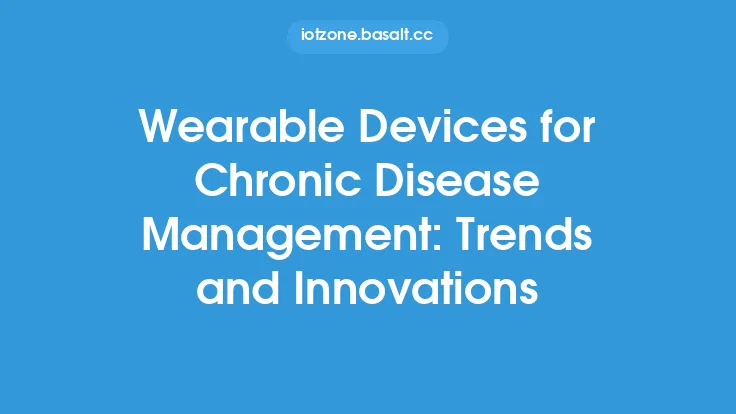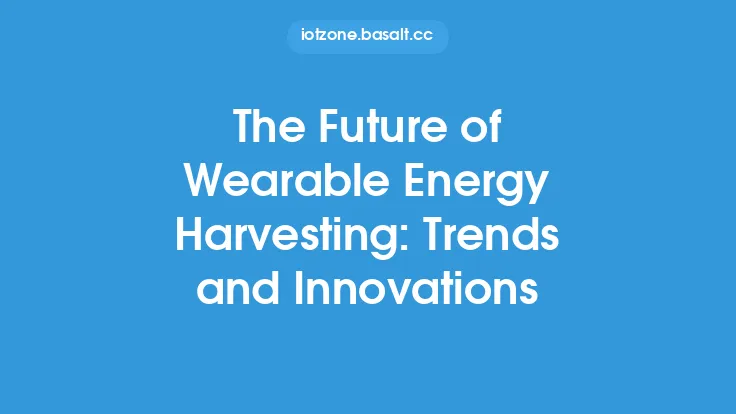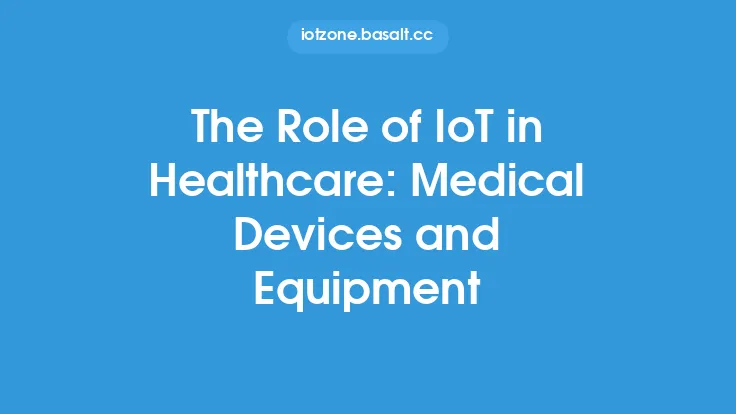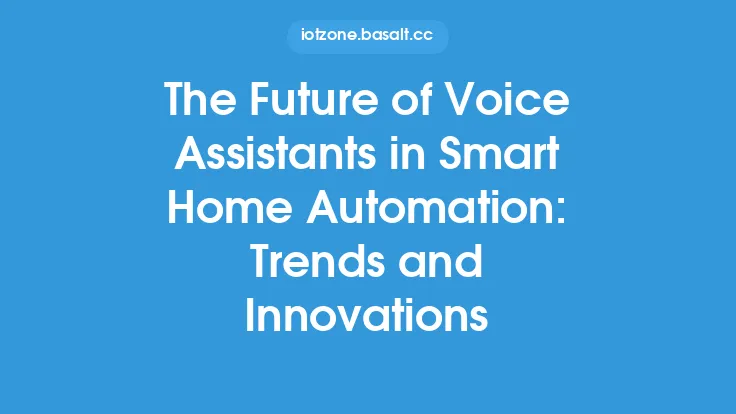The Internet of Things (IoT) has revolutionized the way we live, work, and interact with our surroundings. One of the most significant aspects of IoT is the development of wearable devices, which have become an integral part of our daily lives. Wearable devices are small, portable, and often wearable gadgets that can collect and transmit data, track our activities, and provide us with valuable insights into our health, fitness, and lifestyle. In this article, we will delve into the technology and innovations behind wearable devices in IoT, exploring their architecture, components, and communication protocols.
Architecture of Wearable Devices
Wearable devices typically consist of a combination of sensors, actuators, and processing units that work together to collect and process data. The architecture of a wearable device can be broadly categorized into three layers: the sensing layer, the processing layer, and the communication layer. The sensing layer consists of various sensors such as accelerometers, gyroscopes, and heart rate monitors that collect data from the user's body and environment. The processing layer consists of a microcontroller or a processor that processes the data collected by the sensors and performs tasks such as data analysis, filtering, and compression. The communication layer consists of wireless communication protocols such as Bluetooth, Wi-Fi, or cellular networks that enable the wearable device to transmit data to other devices or to the cloud.
Components of Wearable Devices
Wearable devices are composed of a variety of components, including sensors, actuators, processing units, memory, and power sources. Sensors are used to collect data from the user's body and environment, and can include devices such as accelerometers, gyroscopes, magnetometers, and bioelectrical sensors. Actuators are used to provide feedback to the user, and can include devices such as vibration motors, LEDs, and speakers. Processing units, such as microcontrollers or processors, are used to process the data collected by the sensors and perform tasks such as data analysis and compression. Memory is used to store data and programs, and can include devices such as flash memory, RAM, and ROM. Power sources, such as batteries or supercapacitors, are used to power the wearable device and can include energy harvesting technologies such as solar cells or kinetic energy harvesting.
Communication Protocols
Wearable devices use a variety of communication protocols to transmit data to other devices or to the cloud. Bluetooth is a popular wireless communication protocol used in many wearable devices, including fitness trackers, smartwatches, and headphones. Wi-Fi is another commonly used protocol, particularly in devices that require high-speed data transfer such as smart glasses and augmented reality headsets. Cellular networks, such as 4G and 5G, are also used in some wearable devices, particularly those that require constant connectivity and high-speed data transfer. Other communication protocols used in wearable devices include Zigbee, Z-Wave, and NFC.
Sensor Technologies
Sensors are a critical component of wearable devices, and are used to collect data from the user's body and environment. There are many different types of sensors used in wearable devices, including inertial measurement units (IMUs), bioelectrical sensors, and environmental sensors. IMUs are used to track the user's movement and orientation, and can include devices such as accelerometers, gyroscopes, and magnetometers. Bioelectrical sensors are used to track the user's physiological signals, such as heart rate, blood pressure, and brain activity. Environmental sensors are used to track the user's surroundings, and can include devices such as temperature sensors, humidity sensors, and air quality sensors.
Power Management
Power management is a critical aspect of wearable devices, as they are often powered by small batteries or energy harvesting technologies. There are several strategies used to manage power in wearable devices, including power gating, dynamic voltage and frequency scaling, and energy harvesting. Power gating involves turning off components of the device when they are not in use, in order to conserve power. Dynamic voltage and frequency scaling involves adjusting the voltage and frequency of the device's processor in order to reduce power consumption. Energy harvesting involves using technologies such as solar cells or kinetic energy harvesting to generate power from the user's environment.
Innovations and Trends
There are many innovations and trends in the field of wearable devices, including the development of new sensor technologies, the use of artificial intelligence and machine learning, and the integration of wearable devices with other IoT devices. New sensor technologies, such as bioelectrical sensors and environmental sensors, are enabling wearable devices to track a wider range of physiological and environmental signals. Artificial intelligence and machine learning are being used to analyze data from wearable devices and provide users with personalized insights and recommendations. The integration of wearable devices with other IoT devices, such as smart home devices and autonomous vehicles, is enabling new applications and use cases, such as remote health monitoring and smart transportation systems.
Applications and Use Cases
Wearable devices have a wide range of applications and use cases, including fitness and wellness, healthcare, gaming, and industrial applications. Fitness and wellness applications include tracking the user's physical activity, sleep patterns, and nutrition. Healthcare applications include remote health monitoring, disease diagnosis, and treatment. Gaming applications include using wearable devices to control games and track the user's physical activity during gameplay. Industrial applications include using wearable devices to track the user's location, activity, and safety in industrial environments.
Conclusion
In conclusion, wearable devices are an integral part of the IoT ecosystem, and are used to collect and transmit data, track our activities, and provide us with valuable insights into our health, fitness, and lifestyle. The architecture of wearable devices typically consists of a combination of sensors, actuators, and processing units that work together to collect and process data. The components of wearable devices include sensors, actuators, processing units, memory, and power sources. Communication protocols such as Bluetooth, Wi-Fi, and cellular networks are used to transmit data to other devices or to the cloud. Sensor technologies, such as IMUs, bioelectrical sensors, and environmental sensors, are used to collect data from the user's body and environment. Power management strategies, such as power gating, dynamic voltage and frequency scaling, and energy harvesting, are used to manage power in wearable devices. Innovations and trends in the field of wearable devices include the development of new sensor technologies, the use of artificial intelligence and machine learning, and the integration of wearable devices with other IoT devices. Wearable devices have a wide range of applications and use cases, including fitness and wellness, healthcare, gaming, and industrial applications.

